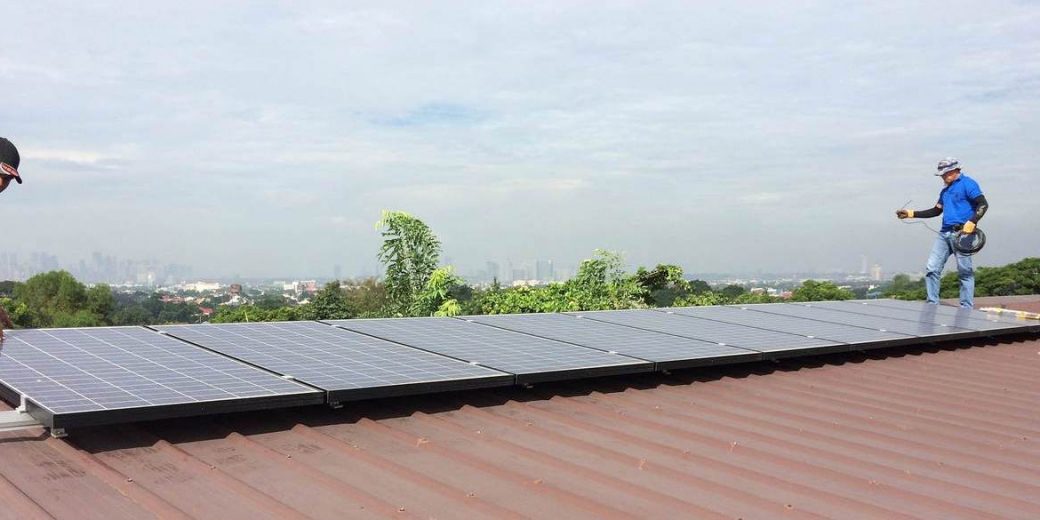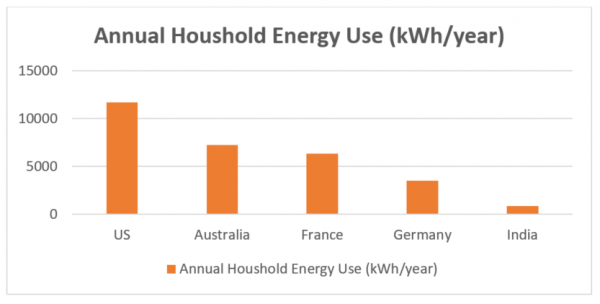What will a 2kW Solar System or Kit Power?

Today, let’s look at how much of our everyday stuff (appliances, lights, electronics, etc) a small, 2 kW solar system could power on its own.
The size of any solar installations is measured in kilowatts (kW) – the amount of electricity it could produce in a single instant. The average residential solar installation is 5 kW, about 20 solar panels. This is great, but what does kW really mean? We need real-world context!
Before we move any further, it’s important to note that we are using basic math here. If you have a 2 kW system installed on your roof, the actual electricity you would produce would be lower than 2 kW due to weather, dirt on the panels, and the inefficiency of the inverter, wires, and wire junctions. The National Renewable Energy Lab encourages multiplying a solar system production by 86% to account for these losses. Today though, let’s keep it simple and just say that, in our world, a 2 kW system actually produces 2 kW.
We’ve looked how much electricity typical home appliances use to see what we could power with a 2kW system. Check out the graph below to see our findings!
| Appliance | Wattage |
| Refrigerator | 475 watts |
| Laptop | 50 watts |
| 10 LED | 90 watts |
| Room Air conditioner | 1000 watts |
| Garage Door Opener | 350 watts |
| Total | 1965 watts |
As you can see, the electricity goes pretty fast. We have enough electricity to cover basics like the fridge and air conditioning, but we don’t have nearly enough for necessities like ovens, clothes dryers, and coffee makers!
Just for kicks, here’s the number of appliances a 2kW solar system can power at any given time:
- 222 9-watt LED lights
- 40 ceiling fans
- 10 electric blankets
- 40 laptops
- 8 drills
- 4 refrigerator/freezers
- 20 sewing machines
- 2 coffee makers
- 2 blow dryers
- 2 room air conditioners
- 500 cell phone chargers
- 4 plasma TVs
- 1 microwave
- 4 vacuum cleaners
- 4 water heaters
Calculations like this are fun, and they’re very important for off-grid homes that have to meet all their energy needs with their solar and battery system. Most of us though who install solar are still connected to the grid, so having a solar system that will cover our highest energy use in a single instant isn’t that important – we can always just pull electricity from the utility grid if we need it.
More pertinent to on-grid solar adopters is to keep in mind that the calculations above use kilowatts – a measurement of how much electricity is pulled in a single instance. When you turn on a 9 watt LED lightbulb, it immediately begins using 9 watts. If you want to measure how much energy that light bulbs pulls over several hours, use kilowatt-hours (kWh). A 9 watt lightbulb left on for 1 hour would use 9 watt-hours of electricity (.009 kWh of electricity).
In the same way, a 2kW solar system will produce electricity throughout the day, which we can measure in kWh. The amount of kWh the system will produce depends on location, weather, temperature, and solar radiation. Using the National Renewable Energy Lab’s PVWatts Calculator, we find that a 2 kW system will produce:
- 2, 921 kWh/year in Denver, Colorado
- 2,580 kWh/year in Washington DC
- 2,269 kWh/year in Portland, Oregon
- 3,418 kWh/year in Phoenix, Arizona (more on Arizona Solar)!
The average American home uses 11,700 kWh per year. So, depending on the location, a 2 kW solar installation will cover about 20% to 30% of the average American home’s energy usage.
Going back to our list above, more than anything it probably makes you realize how much energy we use on a daily basis. Heck, you need 10 solar panels just to turn on your microwave! Electricity being constantly available to us, instantaneously and consistently, is something most of us take for granted on a daily, or even hourly, basis. Every time I turn on the light in the bathroom, I know I should be saying a quiet thanks to my local utility, but it’s just hard to remember sometimes. Households in other countries use far less electricity than we do in the US:

Graph: Understand Solar; Data source: shrinkthatfootprint.com
The average household in the United States uses 11,700 kWh per year. Compare that to Australia’s 7,227 kWh/year or Germany’s 3,512 kWh/year! Smaller living spaces, climate, and more efficient habits all play a role in a household’s energy usage.
Let’s pull all this disparate information together. What can we learn from all this?
In my mind, the first step to installing solar is reducing usage! Installing energy-efficient appliances, sealing air leaks around doors and windows, and beefing up insulation where it’s needed can all go a long way to decreasing your energy use. With this lower energy use, a smaller solar installation will offset an even greater percentage of your energy use, thereby setting you up to save even more money when you go solar!
What about Buying a 2kw Solar Kit?
For a small installation around 2 kW, many wonder if they should just buy the best solar panel kit that includes the panels, inverter, wiring, and connections, and simply install it themselves. It’s not that hard right? With “soft costs” like installation, marketing, and sales accounting for 64% of total installation costs, homeowners could save buku bucks with a DIY installation.
Outside of off-grid homes not connected to the utility grid, DIY solar is often not practical. For houses connected to the grid, there are numerous hurdles to jump before installing your own system, including:
- There are very few, if any, resources available to grid-connected homeowners on how to install and maintain a solar system. Homeowners looking to install solar themselves are left in the dark on the numerous small details of relevant electric code, installations standards, and tips and tricks to make the installation safe and easy.
- Most cities and counties in the United States follow the National Electric Code and require all electrical work on residential electrical panels to be performed by a licensed electrician. So even if you installed the solar panels and wiring yourself, you’d still have to hire an electrician to finish the job for you. Solar installation companies either have full-time licensed electricians on staff or subcontract work to independent electricians, so if you hire an installation company, the licensed electrician is included in the total installation price.
- Most importantly, for solar installations to qualify for net metering and for permission to connect to the utility grid, some utilities require at least one person on your solar installation team to be certified by the North American Board of Certified Energy Practitioners (NABCEP). If a homeowner decides to go forward with a DIY installation and forgoes net metering or any other utility incentives, it can greatly affect the long-term financial benefits of the system, possibly even leading to an installation that doesn’t save the homeowner any money.
Before moving forward with a DIY installation, be sure to weight the benefits of a cheaper installation with the challenges outlined above. If all of these sound conquerable, go for it! (But be safe). If some of these sound daunting, it’s probably best to stick with an installer.
More: details on solar panel kwh.
